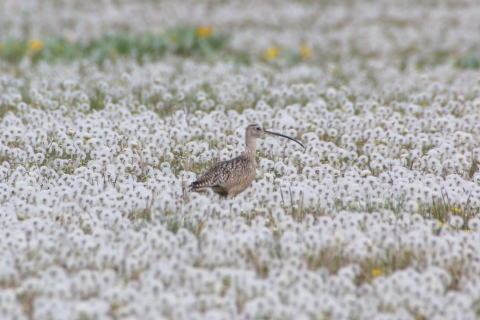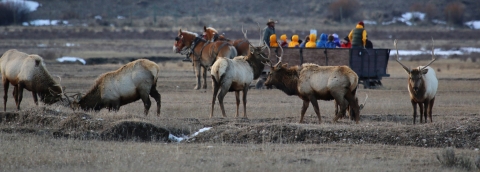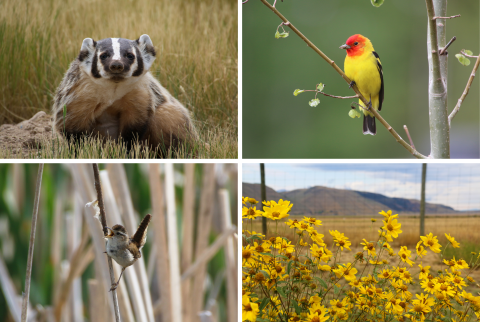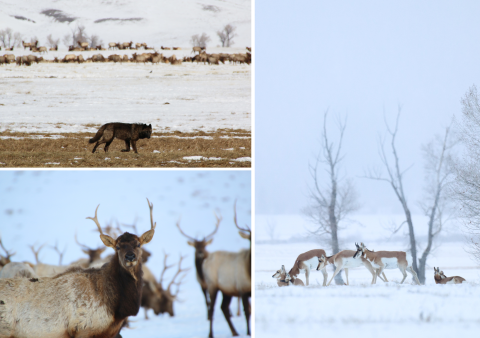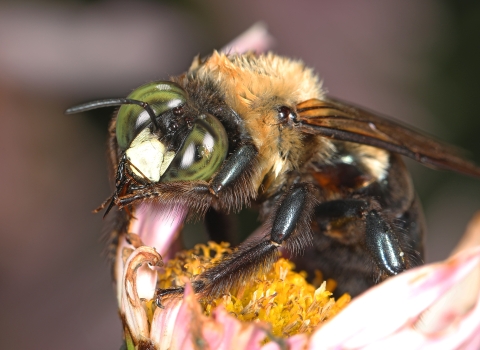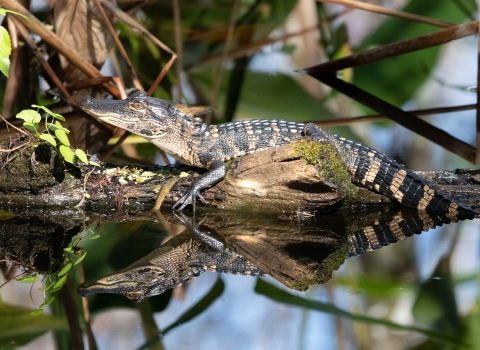Through the FWS Behind the Lens blog series, the USFWS Library aims to highlight Service employees in the field who have contributed spectacular photography, with an eye toward reflecting our full mission. Kari Cieszkiewicz is an education and outreach coordinator at National Elk Refuge in Wyoming and the USFWS Library’s latest Behind the Lens photographer!
From a young age, Kari has been passionate about conservation and recognized the critical role humans play in conserving natural spaces. She loves to share her photography with others to support her role and mission working at National Elk Refuge. Being in nature is when she is happiest and most fulfilled. She has lived in Jackson, Wyoming since 2012. In her free time, she loves to backcountry ski in the Tetons and backpack in the surrounding National Forests.
Kari went to Purdue University and earned a bachelor’s degree in history. She wanted to pursue working in a museum, but once she was exposed to the beauty of the Greater Yellowstone Ecosystem and the West in general, she decided to change her path and spend life in the mountains. She became interested in a career with the U.S. Fish and Wildlife Service when she started working seasonally as a winter naturalist at National Elk Refuge. She immediately fell in love with the refuge and says, “The seasons are dramatic, the wildlife is abundant, and the views are unparalleled.”
As the education and outreach coordinator at the refuge, Kari has many important jobs, but her favorite is overseeing the winter naturalist program. This program serves primarily to enhance visitor experiences, but it also supports the education program and visitor center at the refuge. Kari supervises seasonal employees from November to April each year. During that time, they lead free wildlife excursions, host dozens of school groups, capture content for social media, and support field biologists and staff at the visitor center. These winter naturalists are experts in local flora and fauna and help with important tasks behind the scenes.
Kari and her team love to enrich the visitor experience, and they work hard to add thoughtful context to a refuge visit. She says, “Visitor Services is such a critical part of wildlife conservation because it offers opportunities for connection, discovery, and advocacy.” Through their programs, informal contacts, onsite videos, and visitor center displays, Kari and the staff at National Elk Refuge aim for visitors to leave feeling inspired by the National Wildlife Refuge System and the U.S. Fish and Wildlife Service. She shares, “By creating deeper connections with our visitors, we hope that they choose to visit more refuges, pick up a new outdoor hobby (like birding), donate to conservation organizations, or find pockets of nature in their hometown to visit.” They strive to create experiences that are memorable and last beyond their visit.
While exploring the refuge, Kari typically brings her camera along. This gives her the opportunity to capture surprise moments in nature, like spotting a badger on a summer day or seeing a marsh wren makes its presence known, calling in the reeds. In the Greater Yellowstone Ecosystem, the landscape of the refuge is primarily glacial outwash plain and rolling hills with a narrow, winding creek. The refuge is surrounded by the jaw-dropping rugged peaks of the Teton and Gros Ventre Mountain ranges. Kari loves landscape photography because “it gives a more honest perspective of what a visitor might see on the refuge.”
National Elk Refuge is nationally renowned for, you guessed it, elk. But it also protects critically important habitat for many other iconic species, including bison, wolves, trumpeter swans, bald eagles, bighorn sheep, and cutthroat trout. Wildlife is abundant in this area, but the average visitor likely doesn’t have a 400mm lens or unlimited time to capture wildlife behind the lens like Kari.
Kari Cieszkiewicz continues to be passionate about nature photography and has contributed several images to the National Digital Library, where you can view her collection. Visit our National Digital Library at images.fws.gov to find thousands of public domain images of wildlife, their habitat, and the work of the U.S. Fish & Wildlife Service. Brought to you by the USFWS Library, #FWSBehindTheLens #WeAreUSFWS.


